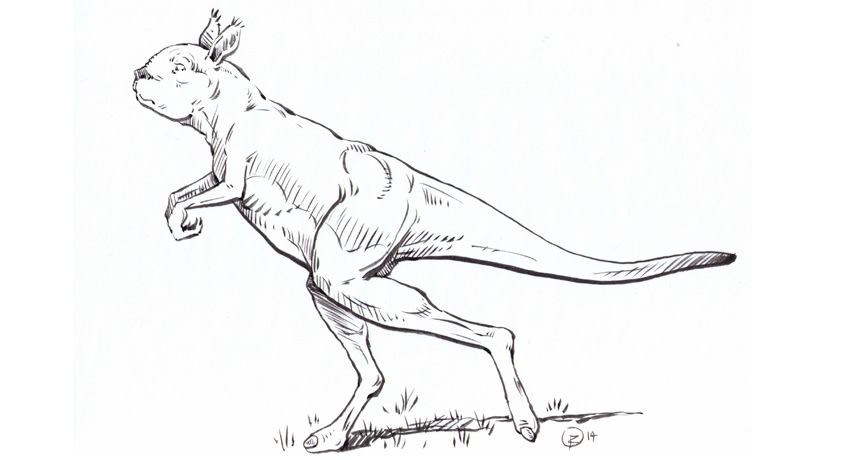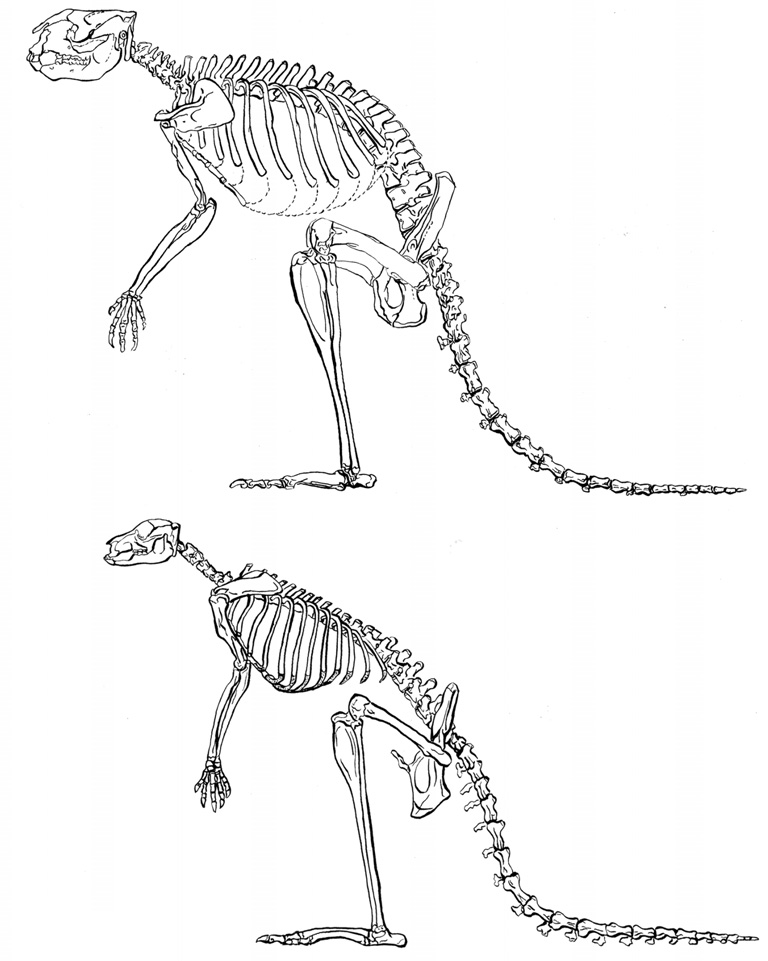Extinct giant kangaroos tiptoed one leg at a time
Fossil clues suggest refrigerator-sized sthenurines did not hop

NOT A HOPPER The extinct supersized kangaroo Sthenurus stirlingi probably tiptoed one hind leg at a time instead of hopping, says a new study.
Brian Regal, C.M. Janis et al/PLOS ONE 2014








